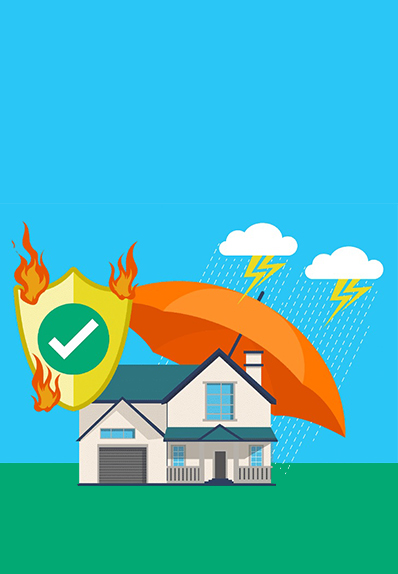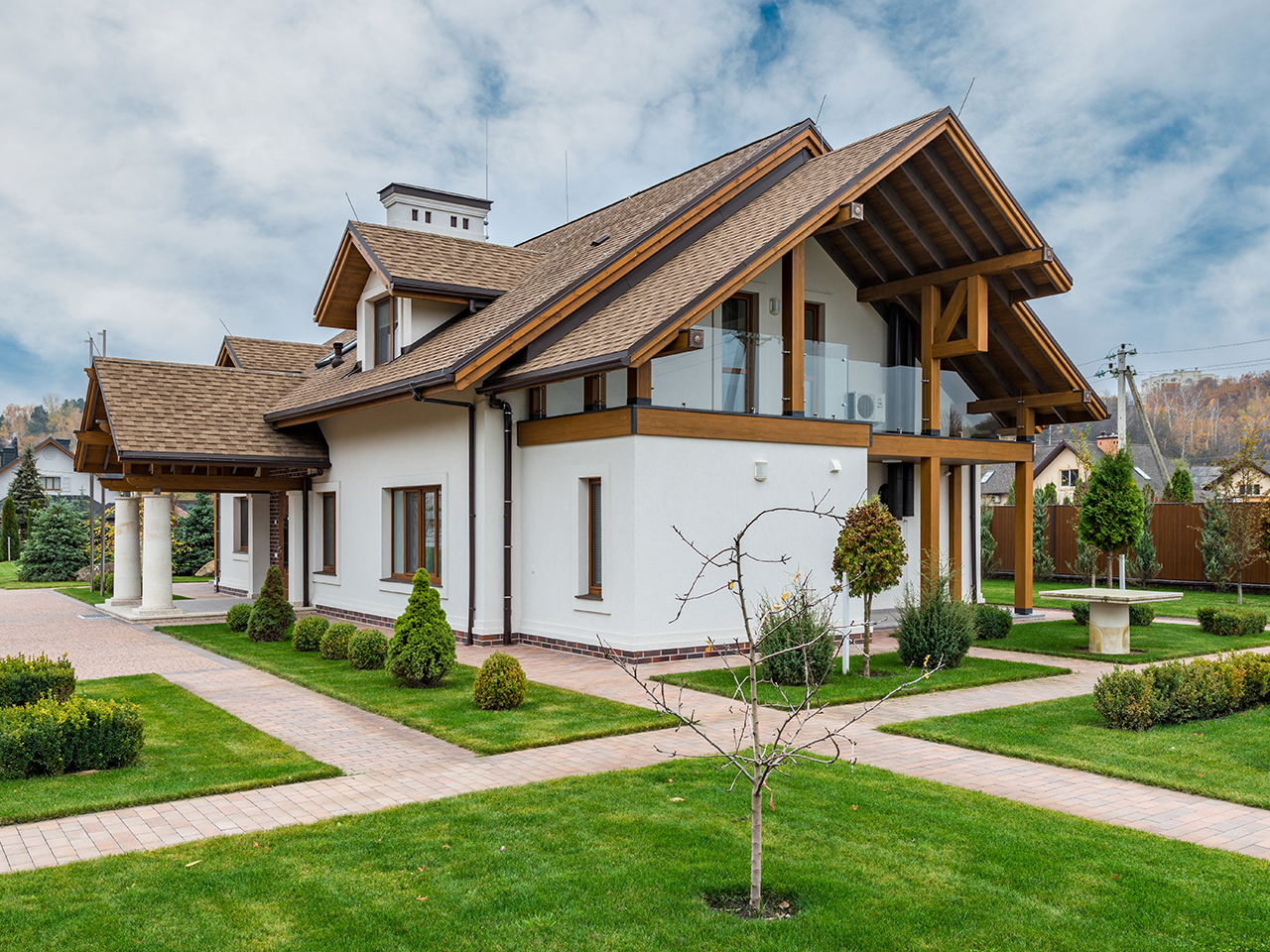Florida 5 Roofing Insurance Solutions
Insurance information every Florida homeowner should be aware of when it comes to their roof replacement or repairs.
Does Homeowners Insurance Cover Roof Replacement?
It depends on what caused
your roof problems
A typical all-perils homeowners insurance policy does cover your roof and the
cost of replacing it if it gets damaged. That's the good news. But usually,
you're covered only if the damage or destruction results from a sudden accident
or act of nature. Problems that ensue from general wear and tear or from a roof
that has exceeded its intended life span are not eligible for reimbursement
because they fall under the general maintenance responsibility of the
homeowner.
Key takeaways:
- Most homeowners insurance policies cover roof replacement if the damage is the result of an act of nature or sudden accidental event.
- Most homeowners insurance policies won't pay to replace or repair a roof that's gradually deteriorating due to wear-and-tear or neglect.
- Roofs that are over 20 years old often have limited coverage, if any.
- To ensure approval of your claim, keep records of repairs, before-and-after photos, and reports from inspections. Notify your insurance company promptly when damage occurs.


How Roof Coverage Works?
Of all the parts of your home, the roof arguably has the most direct exposure to the elements. Here in Florida where we have a more tropical climate, there is the potential for gales and hurricane-force winds as well as hail storms.
Not only can Mother Nature do direct damage, but she can also trigger other sorts of havoc—like a violent windstorm that topples a tree onto your roof. There may be wildfires. Or there could be more unlikely incidents, like something crashing down on the roof from above—like debris from an explosion or aircraft.
Happily, the roof is an integral part of the structure of your home, and so the dwelling coverage section of your homeowners' insurance policy typically protects you from such perils. Damage and destruction from such events qualify the homeowner for a total or partial replacement of the roof.
Coverage is often curtailed for roofs that are over 20 years old—they may only be insured for their actual cash value, not for their current replacement cost. Of course, you'll still have to pay your policy deductible before your coverage kicks in. Some policies, especially those written in certain high-risk states, impose a higher deductible for damages that ensue from hurricanes or hailstorms. Residents in those areas wishing to protect their property often have to purchase additional coverage, or a separate windstorm insurance policy or hurricane insurance policy. Of course, anyone who wants extra protection or a higher degree of coverage can purchase it as well.
Special Considerations for Roof Coverage
If a dramatic event causes
dramatic damage—the roof comes crashing down, has a major hole, or is torn off
entirely—coverage is likely. More problematic are instances when the damage is
less dramatic, even if an act of nature caused it. Let's say a violent
thunderstorm nicks a bunch of your roof's shingles. The insurance company may
classify that as cosmetic damage, and not cover it. Or let's say that, after
the aforementioned storm, you notice your roof has become leaky. Even though
the rains triggered it, the insurance company might claim that's a general
wear-and-tear problem—reflecting your roof's gradual deterioration—which is
never covered.
Ironically, any water damage caused by the leaking roof to your walls, floors,
or furniture probably would be covered under the all-perils section of your
policy. However, the roof repair itself would not be.
Preventing Roof Problems
It is the responsibility of
the property owner to properly care for and maintain their roof, and to be
aware of the life span of different materials, which can range from 15 to 100
years. Homeowners can take other steps to help protect their roof—like hiring
licensed professionals to perform regular inspections. Many roofing companies
will inspect a roof for free in the hopes of earning future business (just
don't be surprised if they find a lot of problems).
Make sure your roof is free of debris and does not hold or collect water. Any trees
touching or hanging over the roof should be trimmed back. After a big storm or
a long snowy spell, always check your roof to see how the shingles and gutters
are doing. If you live in wind-prone areas, see that your home and roof are up
to the current building codes.
Getting Reimbursed for Roof Replacement
Age is not your roof's
friend. Unless it's made of a material with famed longevity, like slate, a roof
depreciates with each year; many insurers won't cover those that are over a
quarter-century old. Other possible policy exclusions could include improper
maintenance or neglect, the use of certain expensive roofing materials (like
cedar or recycled shake shingles), or roofs with more than two layers of
roofing material.
To give yourself the best chance of having your insurance company pay for a
roof, the first step is to call them out for an inspection. Before they arrive,
gather up as many documents as you can, including a copy of your current home
insurance policy, any home inspection reports, receipts for any repair work
you’ve done, and photos of any damage that has occurred. (Since
before-and-after shots are always useful, it's a good idea to take photos of
your roof when it's healthy.) All will be helpful in the claims process. The
insurance company will send out an adjuster to inspect the damage and offer
their own assessment.
Tips to Save on New Roof Costs
The average price range for
a roof replacement can run from $2.50 to $4.50+ per square foot depending on
the roofing material used.12 Sometimes roofing estimates will quote by the
"square," which is used to describe a 10'x10' area, or 100 square
feet (so you may see a quote for something like $450 per square). Someone might
be able to help you out for less for asphalt shingle repair. Expect to pay a
bit more for tile and metal roofs. Here are some tips on how to minimize your
repair and replacement costs:
1.Do your research: Know the size and complexity of your roof and the exact
materials you want to have installed before talking to contractors.
2.Shop around: Get quotes from several roofers and always request and check
local references before hiring someone. Be wary of extremely low bids, which
could mean subpar work, and make sure roofers offer a warranty on materials and
installation.
3.Time it right: Roofers are busiest in late summer and fall. Scheduling your
roof replacement in late winter or spring may yield lower prices or off-season
discounts.
4.Do it (or some of it) yourself: Consider doing part of the work yourself. If
you have the time, the proper equipment, and a stomach for heights, removing
old roofing before the installer arrives could help cut costs.
5. Consider an overlay: An overlay involves installing new shingles on top of
existing ones. Because the old roofing stays put, overlays require fewer hours
of labor and cost less than a full replacement. However, an overlay may void or
shorten the manufacturer's warranty on roofing materials. Overlays also
typically increase future replacement costs due to increased labor and job
waste. We do not recommend going this route as it adds weight to your roof
structure system and an eventual replacement is more expensive to tear off two
layers of roofing materials.